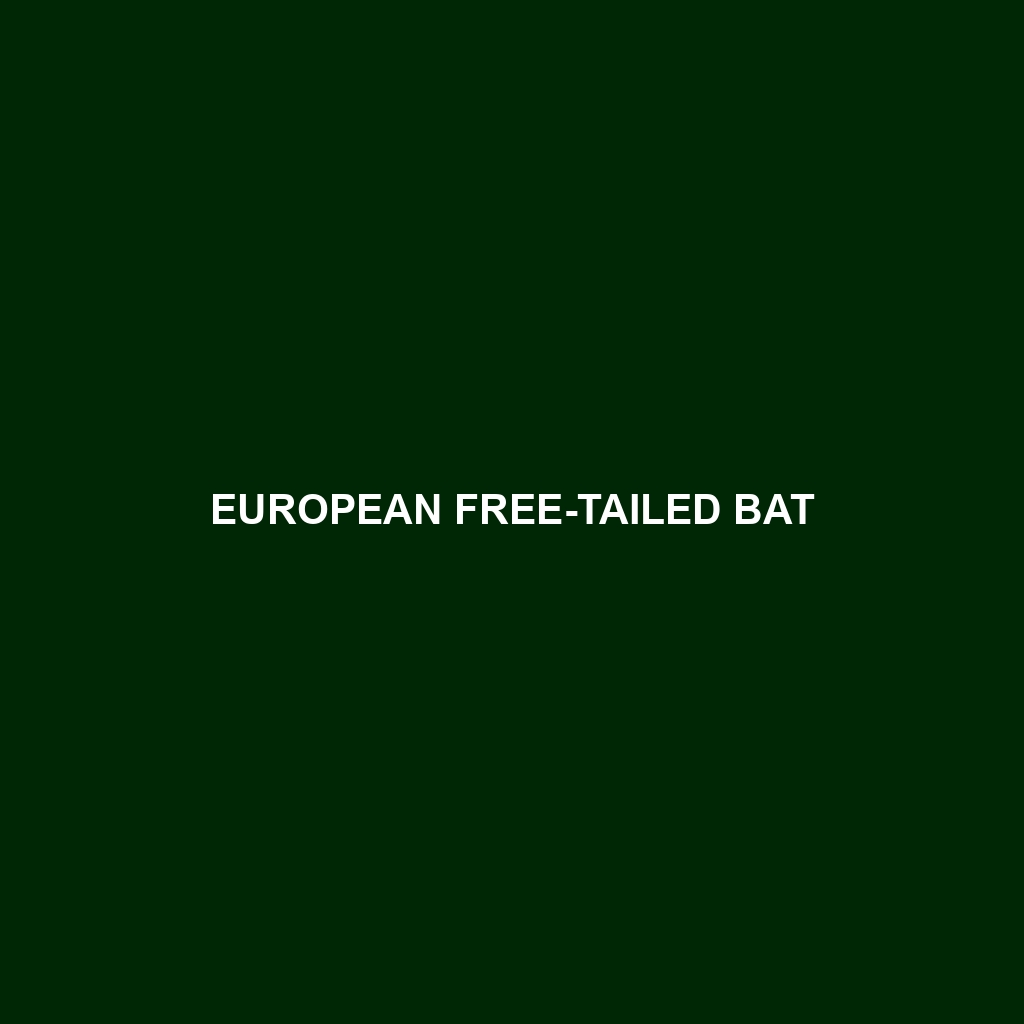Common Name: European Free-tailed Bat
Scientific Name: Tadarida teniotis
Habitat:
The European Free-tailed Bat is primarily found across various regions of Europe, North Africa, and parts of Asia. Preferred habitats include open landscapes such as grasslands, woodlands, and agricultural areas. They are often seen roosting in caves, buildings, and sometimes in trees, utilizing their environments to optimize hunting grounds and breeding sites.
Physical Characteristics:
This species typically measures between 9.5 to 10.5 cm in body length with a wingspan reaching up to 30 cm. The fur is short and silky, displaying a rich brown or grayish hue. The most distinctive feature of the European Free-tailed Bat is its long, narrow wings, which make it an efficient flyer. Additionally, their tail extends beyond the tail membrane, a characteristic that sets them apart from other bat species.
Behavior:
The European Free-tailed Bat is known for its remarkable agility and speed during flight, often reaching speeds of up to 160 km/h. They are nocturnal creatures, emerging from their roosts at dusk to forage for insects. These bats exhibit social behaviors, often flying in groups or colonies while communicating through various vocalizations.
Diet:
This bat primarily feeds on a diet of moths, beetles, and other flying insects. Utilizing echolocation, they skillfully hunt their prey during flight. Their foraging habits make them vital for controlling insect populations, enhancing agricultural practices in their habitats.
Reproduction:
The European Free-tailed Bat typically breeds in late spring to early summer. Females give birth to a single offspring, called a pup, after a gestation period of about 2 months. The pups are born hairless and are dependent on their mothers for food and warmth for several weeks, gradually developing the ability to fly and hunt on their own.
Conservation Status:
Currently, the European Free-tailed Bat is classified as Least Concern according to the IUCN Red List, indicating that it is not currently threatened. However, habitat loss and environmental changes pose potential risks to their populations, necessitating continued monitoring and conservation efforts.
Interesting Facts:
The European Free-tailed Bat has a unique social structure; they often roost in large colonies that can number in the thousands. Additionally, their ability to navigate and hunt in complete darkness showcases their exceptional adaptation to a nocturnal lifestyle.
Role in Ecosystem:
As insectivores, the European Free-tailed Bat plays a crucial role in maintaining the balance of the ecosystem by controlling insect populations. Their foraging habits support agricultural biodiversity, promoting healthy crop yields. These bats also serve as prey for larger predators, further integrating them into the food web.
